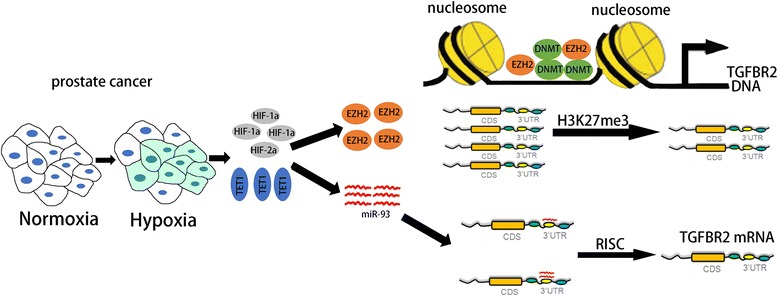Fig. 6.

Proposed working model of hypoxia-EZH2/miR-93-TGFBR2 axis in prostate cancer progression. Prostate cancer generates a hypoxic microenvironment which induces the expression of a series of downstream genes such as HIF-1α, HIF-1β, and TET1, which further promotes the upregulation of epigenetic modulator EZH2 and hypoxia-responsive miR-93. EZH2 may catalyze H3K27me3 or recruit several DNA methyltransferases, which results in higher level of promoter methylation of TGFBR2 gene and subsequent epigenetic silencing of TGFBR2. Besides, miR-93 may reduce the expression of TGFBR2 via binding to 3’-UTR of TGFBR2 mRNA, which can further repress the expression of TGFBR2
